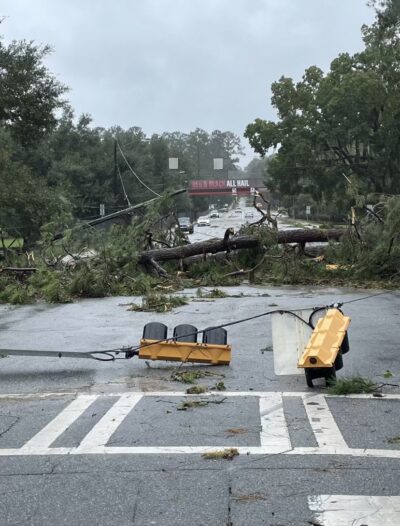Preparing for the Next Disaster
Taylor Hutchinson 09.14.23

As I write this, a Category 4 hurricane is barreling down toward my home. At first, tropical storm Idalia was not perceived by many as a major threat. Early on, the consensus was this could be a low-end hurricane and just be a coastal event that the Florida coastline is used to. The phrase “rapid intensification” was used many times by meteorologists in the forecast leading up to landfall. In the past 12–24 hours, the storm has gone from a Category 1 to a Category 4. At the same time, the track has bounced from East to West and from West to East. Where it would end up and the widespread damage that it could have is not yet written. In the end, natural disasters and other major catastrophes can develop quickly. Having a plan and being prepared beforehand goes a long way in keeping a disaster from being a tragedy. While all factors cannot be considered or controlled. An ounce of prevention prevents pounds of pain.

Planning for the next disaster is best done well before it hits. Having sustainment provisions such as a generator, radios, and dried goods well ahead of a catastrophe makes life a lot easier if a disaster strikes suddenly. The goal is to have access to food, communication, and protection. Store shelves of food and water dry up quickly before and after a disaster.
Fresh water is not only needed for drinking but also for hygiene and cooking. Sure, you can count on a few places opening shop shortly after a disaster, but prepare to get in line and wait, hoping that supplies last. A good rule of thumb is to have at least 2-weeks worth non-perishable food in your pantry. Cycling that food into your normal day-to-day routine is the best practice to prevent spoilage.
Communication tends to break down during and after an event. Cell towers and internet lines are damaged or become overwhelmed during a widespread incident. Redundant communication lines to receive information and transmit information are vital. FRS or GMRS radios have their pros and cons, but having something apart from a cell phone is worth its weight in gold.
Protection is a subjective area of preparation. Everyone’s situation for staying safe is different, depending on where you live and who you live around. For example, living in a coastal region, protection may look like having access to sandbags, a boat, and high ground. Living in a rural area, protection is knowing your neighbors and working together to watch out for one another. This also includes having basic medical supplies and prescription medicine that is unique to your needs.
Ultimately, protection is about keeping the resources and people around you safe. If the food spoils from lack of power or a diabetic family member can’t preserve their medication, having all the ammo stockpiles in the world isn’t going to do you any good. We don’t have a crystal ball and cannot prepare for everything, but there are a few things one can do if we see a disaster coming.

If you have early notice of a disaster, don’t delay in getting preparations together. You aren’t the only one that is taking notice and gathering provisions. The goal in last-minute preparation is to supplement what you already have. The time for long-term sustainment has passed. Going back to the basics is still the core advice. Food, communication, and protection.
Sustainment as long as possible is key. When the electricity goes out, you will need food that is already cooked with a long shelf life. Bags of ice can be used for icing down coolers, freezers, and refrigerators to preserve food. Filling up bath tubs beforehand with water can sustain your water needs for a few days.
Stocking up on outdoor grill supplies is an easy backup method for cooking. Prepping for communication last minute will most likely limit you to a cell phone. So be sure everything is charged up to the moment the power goes out. A vehicle with the correct charging adapter can supplement long-term device charging needs.
In an event where communication is expected to be limited, the best option is to stick together with other friends and family. This is also the best means of protection. Gaps in preparation can be made up for by a well-rounded community. Tapping into your local community is your greatest resource when time is limited.

Growing up near the Gulf of Mexico, I am no stranger to hurricanes and natural disasters. I can remember as early as 2005 helping my family prepare for Hurricane Dennis. Even then, with the limited resources we have compared to today, collecting information and being aware of the current threat is more important than ever. Taking these threats seriously and having a plan beforehand can make life a lot easier in the event of a disaster. This limits the mental and physical stress that is inevitable when life puts you to the test. Prior proper planning will prevent poor performance. You alone can’t be ready for every scenario, but having trusted family and friends pulling resources together is the best preparation for making it through a disaster.

